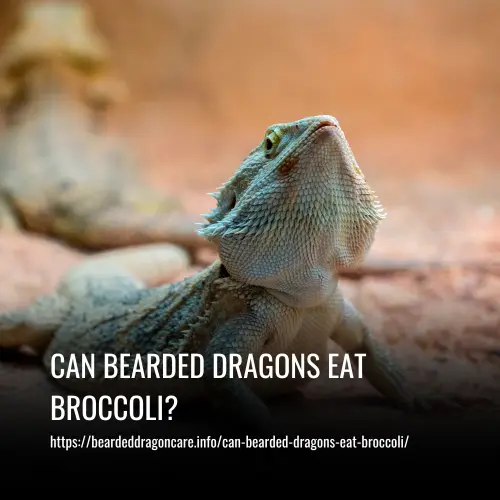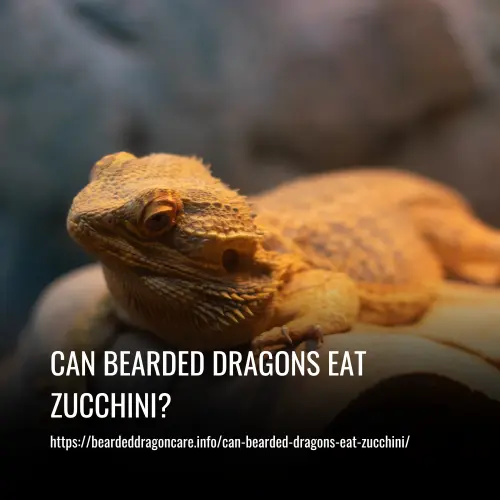Do you own a Bearded Dragon? If so, you should know how important it is to provide them with nutrient-rich foods. Many dragon owners consider quality feeder insects like Butterworms to be a great source of calcium, proteins, and fats for their pets.
Butterworms (Chilecomadia Moorei) are among the hottest feeder insects on the market right now for reptilian diets. Keep reading to find out the nutritional values of Butterworm and the best way to feed Butterworms to Bearded Dragons.
In this article we’ll focus on why feeding Butterworms Chilecomadia Moorei can be such an excellent choice for your Bearded Dragon diet, providing nourishment and fun at mealtime!
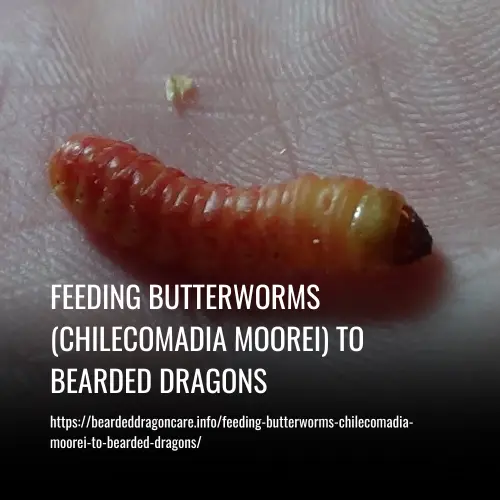
What are Butterworms?
Butterworms, also known as tebo worms, trevo worms, or wood worms are the larval stage of the Chilean moth (Chilecomadia moorei). Due to their scent and bright colouration, butterworms are known to be a popular choice for Bearded dragons, but contain high levels of fat, making them better for offering as snacks.
Butterworms are native to Chile and will not be available in many other countries. Because they are difficult to culture in captivity, the majority of countries that have butterworms to trade will only have them available as an imported product. Butterworms are quiet, slow-moving, fairly odourless, need little maintenance and relatively small amount of space. They are popularly used as reptile and other pet food and for fishing.
Butterworms are considered an invasive species and are often radiated to kill bacteria and prevent them from pupating and breeding. They are also sold in a stage where they won’t eat or need to eat. Although they can be kept in this stage for long periods of time, they do start to lose some of their nutritional value after longer periods. The shelflife of butterworms can be extended with up to four months by keeping them refrigerated at temperatures of 5 – 10 °C / 40 – 50 °F. They need dry conditions to survive. If available, butterworms will be sold by specialised pet shops, bait shops and online retailers (Buy live butterworms from Amazon.com ).
Why are they called Butterworms?
These little guys are known as butterworms because of their high calcium levels. Calcium is important for healthy bones and teeth. They’re one of the favorite snacks for bearded dragons.
Butterworm life cycle
Not a lot of information is available about the life cycle of butterworms. They are the larval stages of the Chilean moth (Chilecomadia moorei), which, after mating, produces eggs, which hatches into larvae. The larvae eat vegetation (including Trevo Bush (Trevoa trinervis) leaves and dry wood) allowing them to grow and pupate again.
Can Bearded Dragons Eat Butterworms?
Bearded dragons are carnivores, meaning they eat meat. And since they are omnivorous, they can eat anything from insects to worms to small mammals.
Yes, Bearded dragons can definitely eat butterworms! These worms are high in protein and fats, and they provide essential vitamins and minerals to the lizard. You can find butterworms at most pet stores.
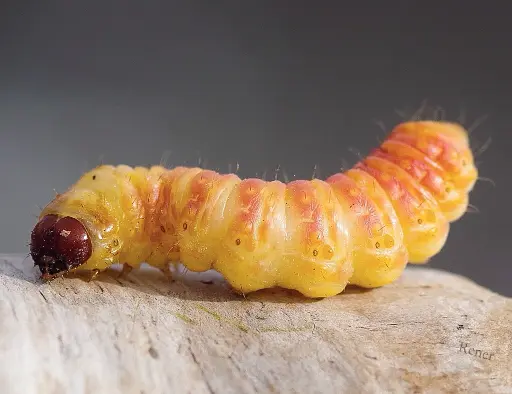
Can Baby Bearded Dragons Eat Butterworms?
Baby bearded dragons can benefit from the occasional treat of butterworms. While they are a great source of protein, butterworms should never be used as the main food source for a baby bearded dragon, since they are high in fat.
Too much fatty food can lead to health problems with baby bearded dragons, and that’s why it is important to only give them butterworms sparingly.
A great way to offer butter worms to your baby dragon is in small amounts – one or two once per week – and make sure that the meal has other nutritious foods like insects and leafy greens as the base component.
This will ensure you’re providing all of the necessary nutrients for your baby dragon’s development – with an occasional treat for good measure!
Are Butterworms Good for Bearded Dragons?
Yes, butterworms are very good for Bearded dragons. They’re high in proteins and other essential nutrients. Reptiless need lots of different types of nutritious and varied meals. It’s best if you give them plenty of different kinds of insects, worms, crickets, and other bugs. But don’t feed them too much at once. Too much of anything can be bad for them.
Butterworm nutritional values*
As a food, butterworm larvae contain high amounts of fat and a low Ca:P ratio:
- Moisture 60%
- Total protein 39%
- Total fat 74%
- Calcium: Phosphorus ratio 1:18(19)
* Values are averages calculated from sources. Expressed as %DM except for moisture.
When comparing butterworms with other crawling food such as Mealworms (T. molitor) and Superworms (Z. morio), they have more or less the same protein (ca. 39% vs. 49% & 54% ), even more fat (ca. 74% vs. 36% & 30%), are considered tastier and has less available calcium levels (Ca:P ratio of 1:18 vs. 1:9 & 1:14). When compared to crickets (A. domestica), butterworms are just respectible for their fat content.
The Risks of Feeding Butterworms to Bearded Dragons
Bearded dragons love to eat butterworms, but it is important that they are not given as a main food source or in excess. Butterworms are high in fat and too much fat can lead to serious health issues for your pet.
Baby bearded dragons can have butterworms as occasional treats, but other foods should be their main source of nutrition.
Feeding your baby dragon too many butterworms can also lead to weight gain and digestive problems such as constipation, bloating, and gas. If you must give your bearded dragon butterworms, make sure they only get a few at a time and that they aren’t consuming them every day.
Otherwise, you could put the health and well-being of your beloved pet at risk!
How to Safely Feed Your Bearded Dragon Butterworms
When it comes to feeding your bearded dragon butterworms, you have two options: live or frozen. Live butterworms should always be given one at a time and closely monitored so that they are safe for the dragon.
If the dragon doesn’t eat the live one, then it can be offered a frozen butterworm instead.
For frozen butterworms, make sure to thaw them before feeding them to your bearded dragon. Place them in a dish and allow them to slowly thaw – this prevents any potential choking hazards!
Additionally, you may want to research other types of insects such as mealworms, crickets, or waxworms that are also suitable for your pet’s diet.
By knowing how to safely feed your bearded dragon butterworms, you’d be able to provide them with the best nutrition possible!
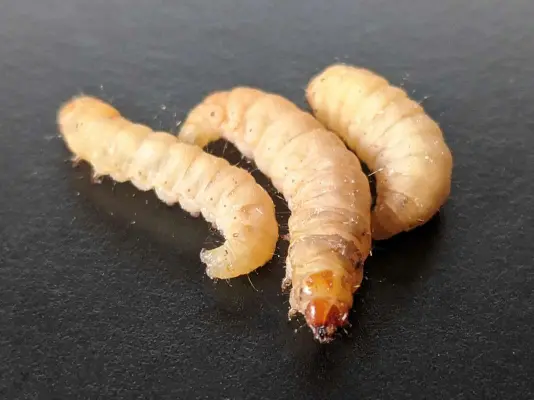
How Many Butterworms Can a Bearded Dragon Have?
If you’re looking to feed your bearded dragon a healthy diet that is high in protein and low in fat, then butterworms are an excellent choice.
A full-grown adult bearded dragon can eat up to 15 butterworms per day, while a juvenile bearded dragon can have up to 5 butterworms daily.
When making sure your pet is getting the right amount of nutrients, it’s important to remember not to leave any uneaten food in the tank as this can rot and cause water pollution.
Once you’ve established how much your dragon should be consuming, make sure that you remove all of the excess butterworms from their tank at the end of each day.
Feeding butterworms to Bearded dragons
Butterworms are typically bright orange with brick-red colouration on the back. This, together with their smell and taste, makes them very appealing to Bearded dragons. On average they measure 2 to 2.5 cm / 3/4″ to 1″ in length (var. 1.2 to 3 cm / 1/2 to 1 1/4″) making them a better-sized choice for adult Bearded dragons.
Their high fat and low Ca:P ratio makes them a poor choice as a staple for Bearded dragon food and will lead to obesity and poor growth, especially in growing Bearded dragons.
If the occasional butterworm is fed, they should be fresh. Butterworms can be fed in a shallow, escape-proof dish with calcium supplementation to stimulate its intake. Uneaten butterworms should be removed immediately after feeding is over. Other higher protein feeder insects such as crickets, silkworms, and/or Dubia roaches should make out the bulk of a Bearded dragon’s food.
Additional butterworms can be offered to breed female Bearded dragons on a daily basis to improve the body condition between egg batches.
FAQs
What is the best way to gather and feed butterworms?
Separate the wheat bran, then feed your pet using tongs or put them in a container. Never put them straight onto the substrate in its enclosure as they’ll likely burrow and hide.
What is the best way to keep Butterworms before using them?
To keep them fresh, store them at a temperature between 40-50°F and humidity between 20-30%. To store them in the refrigerator, put them in the warmest area which is usually the top shelf or door.
Why does the container look empty?
The caterpillars value their privacy, constructing silk and wheat bran enclosures for themselves. To remove them, carefully tear apart their cocoons.
Conclusion:
Feeding Chilecomadia Moorei Butterworms to Bearded Dragons can prove beneficial and provide them with the nutrients they need to stay healthy. However, it’s important to monitor and ensure that your Bearded Dragon is not consuming too many worms or exceeding their required dietary intake in order to avoid any possible health risks.
With proper guidance, feeding Butterworms can be a beneficial and enjoyable treat for your Bearded Dragon.
